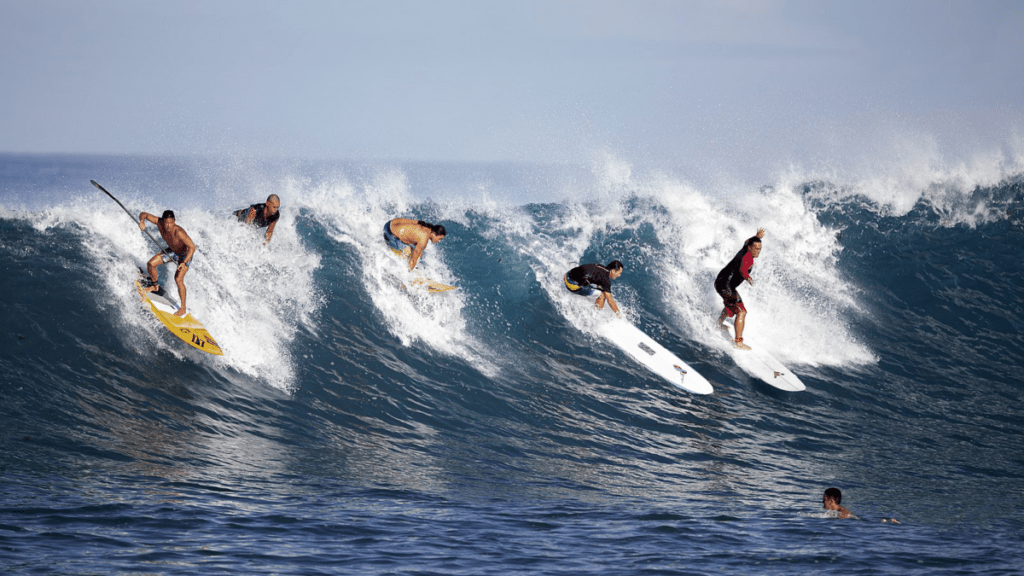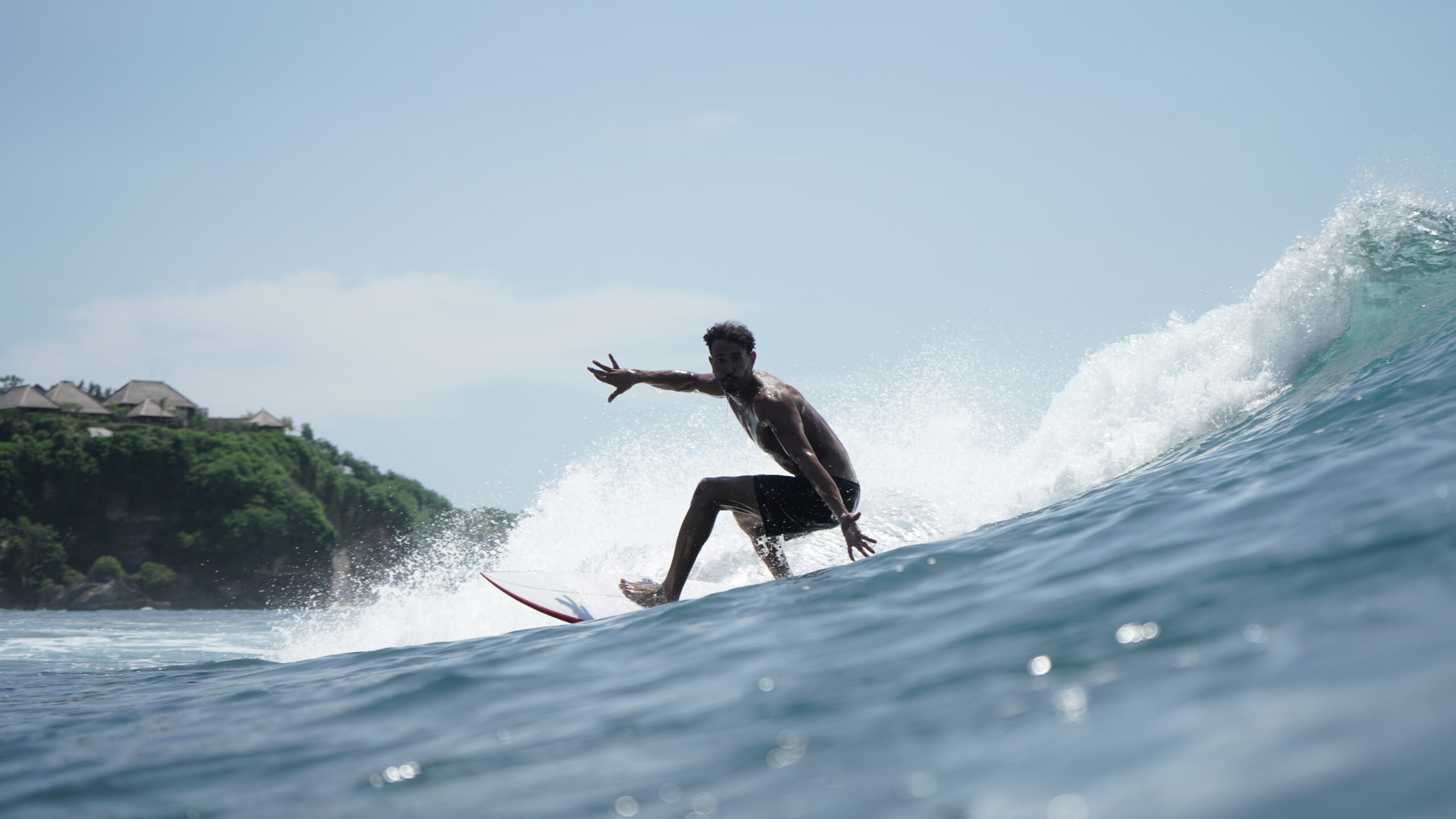How to learn to surf?
learn to surf
Your decision is made, you are going to learn to surf alone. Knowing that the ocean cannot be tamed so easily, discover our advice for learning in complete safety.
The prerequisites to learn to surf
You are going to start surfing alone, but some concerns persist: won’t the waves be too big? Will I be able to pass the “bar”? … Rest assured, surfing is accessible for (almost) all profiles and tastes. However, to start safely, check that all of the following prerequisites are met:
– Not having any contraindication to surfing,
– Be in good health and physically fit,
– Don’t be afraid of water,
– Know how to swim in a pool and at sea
– Be comfortable in the water and in the waves (swim with your head underwater, dive and hold your breath for a few seconds, etc.)
Are these prerequisites validated? Discover the rest of the article to start surfing alone and in complete safety.
Choosing your equipment for learn to surf
Before you take the plunge, you need to take the time to equip yourself perfectly. Here is our selection of tips for finding your board, your wetsuit (unless you only surf in summer in 25-degree water), your leash (accessory connecting the surfer to his board) and the wax.
Choosing the right surfboard is essential to evolve and progress while having fun.
What type and size of surfboard should I choose? ~Ideally, start with a foam surfboard. A foam board will give you the ideal volume to go on the wave and experience your first sliding sensations!
The best way to learn the basics of surfing in complete safety, and which can be used by the whole family.
Safety: essential for a good learn to surf
1 – FIND OUT ABOUT WEATHER CONDITIONS
The weather is an integral part of a surfer’s life. To get started, prefer small conditions with waves less than 1 meter. Don’t overestimate your level. In too bad conditions you can get hurt and scared. Pay attention to the tide times, some spots become very dangerous at high tide, while at low tide they pose no risk.


2 – NEVER SURF ALONE
Even though surfing is an individual sport practiced in contact with nature, the ocean always has the last word. It is therefore recommended to surf in a small group, looking out for each other. You will learn much quicker by observing and asking advice from other surfers. Never forget that losing consciousness at sea can prove fatal… Before going surfing, always inform someone close to you of your return time and the chosen spot.
3 – PROTECT YOURSELF FROM EXTERNAL CONDITIONS AND FROM OTHERS
In summer, with the coolness of the water, we tend to increase the duration of sessions. these conditions, the risk of burns from the sun is increased: opt for anti-UV clothing or a shorty-type wetsuit, supplemented with sunscreen. winter, prefer a full, thicker suit to protect yourself from the cold. Each season, its thermal protection.
More than half of accidents involve a clash between the surfer’s head and his surfboard. These risks of accidents are all the more significant when there are people in the water. Wear a helmet!


4 – GET AWARE OF THE PRIORITY RULES
Like the highway code for cars, surfing also has its own rules to avoid collisions between surfers. For example, the best known: the surfer who is launched on the wave has priority. You will find all the priority rules here.
5 – TAKE LESSONS IN A SURF CLUB
To accelerate your progress, acquire the right movements, and above all avoid hurting yourself, we recommend that you take a few hours of lessons with an instructor. This will guide you step by step to find the right rowing position, to stand up, and learn about the mistakes not to make.
Learn to surf in 5 steps
1 – GET FAMILIAR WITH WATER AND WAVES
If you have never set foot on a surfboard or had the opportunity to jump in the waves, we advise you to first familiarize yourself with the ocean. Observe whether the tide rises or falls, the direction of the current, the size of the waves, etc. Then get into the water and have fun: dive under the wave, jump, swim and try to slide on your stomach! The ideal is to start with bodyboarding to get the first sensations of sliding, otherwise lie down on the back of your board, back to the waves in the foam and let yourself slide. Isn’t that fantastic?
2 – GOOFY/REGULAR learn to surf : WHAT IS YOUR FRONT FOOT?
As with skateboarding or snowboarding, surfing is done in profile, with one foot in front of the other. It is important to know this before getting into the water, otherwise you will unnecessarily lengthen your progress. To find out your front foot we invite you to consult the following link:
3 – LEARN TO ROW EFFICIENTLY
Paddling well is essential in surfing and depends on two factors, the position on the board and the movement of the arms. First, lie down on the board so that it is as flat as possible. Avoid putting too much weight on the back or front of the board, this will create resistance when paddling, or you will fall forward without even having time to slide. The ideal is to raise your chin, neck and torso to lighten the front of the board and increase your speed.
To ride the wave, you will need to be determined and have only one goal: to provide a short but intense effort, “as if your life depended on it.” To row well, you must have regular movements, close your fingers and keep your hand firm. Place your hand in the water, splashing as little as possible, and push it vigorously behind you. To increase your physical abilities and your technique, practice swimming regularly in a pool, particularly crawl.
4 – HOW TO PASS THE BAR TO GET BACK TO THE PEAK?
To go back to the peak (where the waves break), don’t try to go directly there. On the one hand you risk bothering another surfer and on the other hand you risk getting hurt or exhausted. In fact, you will face waves that “break” or will break, so it is recommended to go around this area.
When a wave breaks or a foam comes towards you, and it is not possible to get around this obstacle, two solutions are available to you: the duck or turtle maneuver.
With a foam surfboard or a longboard, due to their large volume, opt for the turtle. Sitting on the board, cross your legs underneath, and grip the rails firmly with your hands to turn around. Stay in this position, upside down, while the foam from the wave passes over you. Once the wave has passed, turn the board over, get back on it and paddle! With a shorter board, try the duck. The maneuver allowing the surfer and his board to pass under the wave, without the risk of going backwards each time.
The final and most difficult step in becoming a “real surfer” is the take-off, which allows you to stand up and start sliding. Once launched onto the wave, place your hands on the board at shoulder level. Raise your head, your chest, and straighten your arms all at once to allow your legs to bend and stand up. Stay bent, back straight and always look in the direction you want to go.
Happy surfing!!

